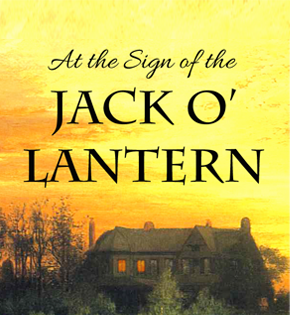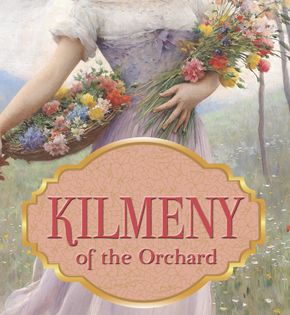In 1678, The Pilgrim’s Progress, the most famous
allegory ever written, was published. This beautiful story, purported to have
dropped into author John Bunyan’s mind by way of a vivid dream, forms the
framework for the beloved classic, Little
Women, by Louisa May Alcott. As The Pilgrim’s Progress describes the
Christian’s journey through this life, detailing the successes and failures,
the times of stagnation and growth, so Little
Women tells the story of four sisters growing up and striving to better
their characters and become productive members of society. Many of the chapter
titles in Little Women are taken
straight from the text of The Pilgrim’s
Progress, and the book is discussed by the March sisters at the opening of
the novel as they resolve to shoulder their burdens with grace. It has always
disappointed me that as many times as this book has been filmed, I can’t recall
a single version that includes any mention of The Pilgrim’s Progress. This is one of the reasons why none of the
movies live up to the book, though the 1949 rendition starring June Allyson and
Peter Lawford is my favorite.
June Allyson was 32 years old when she portrayed the
15-year-old Josephine “Jo” March, the second of the March sisters. She
certainly seems older than 15, but her boyish, brassy personality (slightly
annoying, actually, but then again, so was Jo) helps her seem young enough to
play the part. Janet Leigh was at her most beautiful as the oldest sister, Meg.
Amy is actually the youngest sister in the book, but because the director
wanted to use the amazingly talented 12-year-old Margaret O’Brien for Beth’s
role, Amy was made older than Beth. Elizabeth Taylor was 17, looked 27, and tried
to pass herself off as 12 when she played the part of Amy March. If you haven’t
seen this version, trust me, it is every bit as ridiculous looking as it
sounds, though she does have some funny moments and her comedic timing is quite
good. There is chemistry between the four actresses, and Mary Astor does a
lovely job as their mother, or “Marmee,” as they call her.
Peter Lawford plays Laurie, and his slightly nasal,
watered-down British accent works for him here; he really is quite handsome and
charming, and his scenes with June Allyson, especially their love scenes, are
very tender and sweet. I’ve never really understood the casting of Rossano
Brazzi as Professor Bhaer--not that I’m complaining. I adore him! But he is
incredibly handsome and Italian--not the older, plain, German scholar of the
book. Leon Ames is Mr. March, a
negligible role that I wouldn’t even mention except it may interest some
readers to know that he also teamed up with Mary Astor (Marmee) as the father
and mother in Meet Me In St. Louis.
Margaret O’Brien played their daughter Tootie, making Little Women her second turn as their on-screen child.
Margaret O’Brien is one of the chief reasons why this movie is
so enjoyable. In the scene where she tells Jo (June Allyson) that she is dying,
she is so sincere, so precious; I challenge you to watch it with a dry eye.
O’Brien’s performance deeply affected
Allyson, to the point that she had to leave work early the day that scene was
shot. According to IMDB, Allyson was so overcome with emotion that she even had
to pull over several times on her way home to cry. My other favorite scene with
O’Brien is when she goes to thank old Mr. Laurence (Laurie’s grandfather) for
giving her a piano. I literally sob every time I watch her climb into the old
man’s lap and kiss his withered cheek.
“Beth ceased to fear him from that
moment, and sat there talking to him as cozily as if she had known him all her
life, for love casts out fear, and gratitude can conquer pride.”
The other main reason I love this film is the interaction
between Jo and the Professor. Yes, Rossano Brazzi is extremely handsome, (it is hard for me to
watch him without thinking about his performance in South Pacific as Emile De
Becque--hubba hubba!) and Professor Bhaer was most definitely not supposed to
be a heartthrob, but surprisingly, he and June Allyson seem right together.
When he translates an aria for her, plain Jo glows with awakened emotion and
yes, even passion (albeit chaste passion). The last scene when they finally
reveal their true feelings to each other is so natural (except for the
ridiculous fake rainbow!) that I am again always moved to tears.
I think that I must mention the 1994 film version of Little Women, as many of our readers may only be familiar
with that movie version, but I did not choose to focus on it because I simply
can’t stand it. There are a few scenes here and there that are good,
particularly the Gardiners’ party at the beginning where Jo and Laurie meet for the first time.
Wynona Ryder and a very young (not yet handsome) Christian Bale sparkle and
really do seem like two slightly awkward youths. But for the most part I don’t
find the feel of this rendition to be at all true to the spirit of the novel.
There is only a little focus on spirituality, yet a heavy focus on feminism?! This
baffles and irritates me. I despise any attempts to politicize classic
literature and create a false modern relevance. This book is relevant on its
original merits without inserting a message the author never intended.
Perhaps many of you have only watched the films and
neglected the book. I promise you, as one who has read this many, many times
from girlhood to womanhood, you would enjoy meeting these Little Women in print.
POSTED BY: L.R. Blizzard
POSTED BY: L.R. Blizzard








.jpg)


























